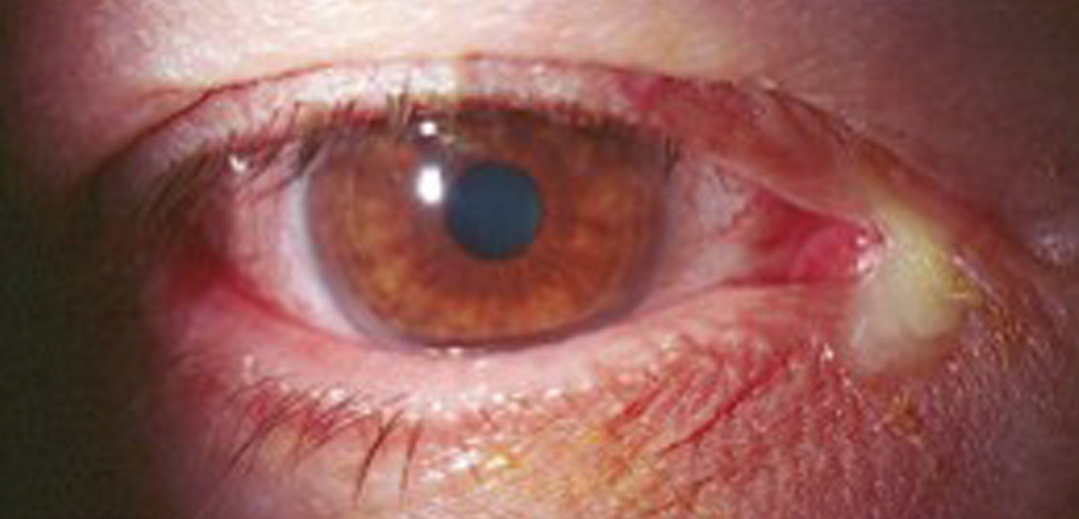 |
Q:
I know povidone-iodine is a helpful ocular surface antiseptic in virtually all situations. What is the ideal concentration for topical use for prophylaxis? What about for therapeutic measures against an assortment of pathogens?
A:
“Researchers on povidone-iodine for ophthalmic purposes started to pick up steam in the 1970s,” says William G. Myers, MD, of Chicago. “Back then, a number of studies determined that of the available pre-surgical antiseptics, 10% povidone-iodine was the least toxic to the cornea.” That was used along with the simple recommendation of washing your face after surgery until the 1980s. However, that concentration is still relatively toxic and patients “will feel a lot of sting,” says Dr. Myers.
 |
| Using 1.0% or 0.25% povidone-iodine can be effective against cases of bacterial conjunctivitis, shown here. Photo: Alan G. Kabat, OD |
Further research eventually led to the adoption of 5.0% povidone-iodine used for three minutes at a time as the standard of care for preoperative ocular antisepsis. This thinking has persisted for three decades with many positive characteristics, including low cost, high water solubility, absence of microbial resistance, ease of application and storage and relatively low toxicity.1 However, new research suggests an even lower concentration could achieve the same effect.
“That standard has not changed for a third of a century, despite the significant epithelial toxicity observed,” says Dr. Myers. “Our view is that the surgeon has to balance effectiveness at both high and low concentrations of bacteria.”
In a recent study, Dr. Myers and a group of researchers set out to gauge the minimum concentration of povidone-iodine that reduces the bacterial load by 3 log units, which is required of antiseptic agents by the FDA. Results led the group to conclude that “povidone-iodine 1.0%, applied in three 30-second applications for preoperative surface disinfection might be as effective for preoperative antisepsis” as the 5.0% povidone iodine standard.2
“Povidone-iodine 1.0% applied three times, spaced at least two minutes apart, was as effective (as 5.0% concentration) in an in vitro model,” the study said. “This could be accomplished in an in vivo situation by dosing once in the preoperative area, once more on entering the procedure room and finally a third time after the lid speculum is placed.”
Therapeutics
While povidone-iodine is commonly used to prep for surgery, it isn’t just limited to preoperative use. A study out of Japan found that 0.25% povidone-iodine can reduce the anterior chamber bacteria contamination rate to zero when used to irrigate the ocular surface during a procedure.3 Additionally, it can be used therapeutically for a number of ocular conditions.
According to Dr. Myers, povidone-iodine can serve as an inexpensive alternative to antibiotics for recalcitrant corneal ulcer treatment. One recent study found 1.25% povidone-iodine was just as effective in treating bacterial keratitis as neomycin–poly-myxin B–gramicidin and ciprofloxacin 0.3%.4 This is particularly helpful in places without many medical resources, as povidone-iodine is inexpensive and widely available. For treatment of bacterial conjunctivitis, meanwhile, Dr. Myers recommends using 1.0% or 0.25% povidone-iodine frequently for several days.
Overall, povidone-iodine is a helpful antiseptic in most situations. However, when it comes to concentration, today’s standard of care may not be ideal for all situations.
1. Chakrabarti A, John SR, Stephen V, Chakrabarti M. Povidone-iodine in ophthalmology. Karala Journal of Ophthalmology. 2007;29(3):282-6. |

